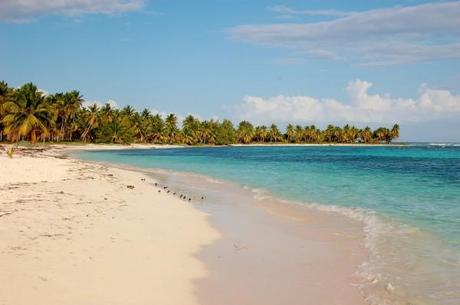
Last year a British teenager was rushed to the hospital when she collapsed after eating almost nothing but chicken nuggets for nearly 15 years.
Imagine: 15 years. Most of us don’t have the system to tolerate that kind of poison; we all saw what happened to the protagonist in Supersize Me. What’s even more shocking is that our nugget-loving friend didn’t look much different than any other British teenager – fair-skinned, smiling, a little fleshy but far from fat.
Lucky for the majority of adults, our bodies have early warning systems that tell us when we’re overburdening them with bad food. We get sick, we feel sluggish and unhappy, we suffer diseases and eventually we figure out that eating healthy food is pretty important – perhaps more than we had originally estimated.
But the fact that the British teen survived so long on deep-fried nuggets begs the question: Can a person live on one food alone?
In every case except one (we’ll get to that later), the answer is no. Even sticking to one category of foods is dangerous. If a person eats only fruit, for example, that person will eventually get scurvy, which hits following vitamin C deficiency. If you ate only meat, in addition to scurvy, your body would eventually start eating it’s own muscles, including your own heart. Even sticking to just one type of carbohydrate will lead to organ failure due to amino acid deficiency.
We need a varied diet to stay alive. Significantly, we need nine essential amino acids to make up the protein that feeds our muscles. Eggs, quinoa and soybeans fit the bill, since they contain all the essential amino acids to make up a complete protein. A person could probably live on them for some time.
There is one food humans can live on indefinitely – our mother’s milk. Even an adult can live this way, provided they have access to enough breast milk. For obvious reasons, the supply chain on this product is limited. Don’t go looking for it at your local grocery store.
Yoghurt is a good substitute; fermented milk is great for the digestive tract. It won’t keep you alive for long though. If you do happen to be stuck on a deserted island (or maybe just sick of spending hours in the grocery store), here are some cheap and accessible foods you can easily live on for long periods of time:
Six Superfoods for Survival on a Deserted Island
1. Kale
It’s got loads of fibre, iron and vitamins A, C and K. It’s also got more calcium than milk. Just in case the deserted island is also somehow polluted, kale provides excellent cardiovascular support. It’s a natural anti-inflammatory and rich in antioxidants – handy since there probably won’t be any doctors.
Kale is easy to grow in your own backyard; you don’t have to be a green thumb. Plant a little and it grows like a weed, replenishing itself naturally as you pull off the leaves. As a bonus, you can boil the stems for a simple vegetable broth.
2. Beans
Most deserted islands don’t have pharmacies that sell metamucil. You’ll need to procure lots of fiber to keep those bowels moving and beans are a good place to start (in addition to all the kale you’ll be eating, of course). Beans are great because they’re easy to grow and easy to store. They’re also rich in calcium, iron and fiber.
If you’ve brought a companion to your deserted island, you’ll want to soak the beans before cooking. Soaking for eight to 10 hours releases enzymes in your beans, which means less tooting and easier digestion. Beans also decrease your risk of colorectal cancer, if eaten regularly.
3. Kiwis and Berries
Berries are amazing and often underestimated. They help us feel full, lose weight and prevent disease. They’re also rich in antioxidants and contain high levels of phytochemicals, which protect us from cell damage so we can live long, happy albeit lonely lives on the island. (Or buy yourself more time to wait for a rescue). Hopefully you brought your handy book of poisonous berries. If in doubt, stick to kiwifruit – an easily recognizable berry.
4. Cantaloupe
This powerful melon is incredibly high in vitamin A, which has the added bonus of being very good for the lungs. It’s also high in vitamin C and potassium, and chock full of beta-carotene. Plus, it’s clinically proven to grow on virtually every tropical island!
5. Quinoa
Some island dwellers like to bring barley, which not only lowers bad cholesterol and promotes good cholesterol, but can also be used to brew your own beer and whisky. Problem is, it’s no good for the gluten intolerant, which most of us are, at least a little. Quinoa is a great alternative since, as mentioned earlier, is contains nine essential amino acids, making it a complete protein. In case you don’t plan to fashion your own bow and arrow and take down some antelopes, quinoa is a great alternative.
6. Seaweed
It’s got more vitamins and minerals than you can name, plus it’s plentiful on the island and dried easily for storage. Crunched up it works great as a salt substitute.
Deserted islands really aren’t so bad. People pay good money for that kind of holiday. On a grammatical note, just be thankful you’re not stranded on a desert island, where there wouldn’t be much growing. If this author could choose, she’d prefer a dessert island – you wouldn’t last long, but boy, would it be fun while you did!
Be Sociable, Share!

